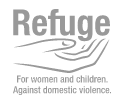
Europe is a subcontinent that comprises the westernmost peninsula of Eurasia. It’s usually divided from Asia by the watershed divides of the Ural River, the Caspian and Black Seas, the Caucasus and Ural Mountains and waterways that connect the Black and Aegean Seas together. The continent’s estimated 2016 population is over 738 million.
Europe is the second-smallest continent by surface area and covers 10.18 million square kilometres (3.93 million square miles), or 2% of the Earth’s surface and 6.8% of the world’s land area. There are approximately 50 countries in Europe. The largest by size is Russia with 40% of the continent, and Vatican City is the smallest.
Europe is the third most populous continent behind Asia and Africa. Its population in 2016 is estimated at 738 million, which accounts for 11% of the world’s population. The continent is currently growing at a rate of 0.3%. Europe has been in a decline for some time and its population is aging rapidly in most countries.
Most ...
Want to see the rest of this article?
Would you like to see the rest of this article and all the other benefits that Issues Online can provide with?
- Useful related articles
- Video and multimedia references
- Statistical information and reference material
- Glossary of terms
- Key Facts and figures
- Related assignments
- Resource material and websites

 Europe population 2020
Europe population 2020








